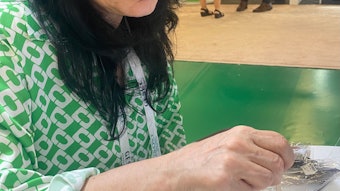
What’s your learning style? Are you someone who is visual, auditory or hands-on? When you want to discover a new technique or skill, do you turn to You Tube for a one minute video, or perhaps Medium or LinkedIn for a five minute read? Would you rather get your hands on it, and learn by trial and error?
Log in to view the full article
What’s your learning style? Are you someone who is visual, auditory or hands-on? When you want to discover a new technique or skill, do you turn to You Tube for a one minute video, or perhaps Medium or LinkedIn for a five minute read? Would you rather get your hands on it, and learn by trial and error?
The point is, each of us has a unique learning style and thanks to the internet, we can easily find answers to our questions in ways that speak to us. When it comes to our customers, they have a unique learning style, too. Are you taking that into consideration in your social media marketing? Let’s dive deeper.
Mixing It Up
Consider YouTube’s phenomenal growth in recent years, with approximately 2. 70 billion users in 2023. Clearly, today’s customer desires video presentations and videos are undeniably a viable marketing tool. But what about written content? Is there still a need for that? I would say absolutely yes. Here’s why:
- Appeals to a wider demographic
- Convenient to viewers on-the-go (in open spaces like public transportation, offices, etc.)
- Keywords pertaining to content are Google searchable
- Easier for readers to skim
The Perfect Mix
There’s a reason why many social media marketers now offer video content with written content overlays: they hit both visual and auditory learners. Many also offer a full written transcript of the video below it. Why exclude one audience when you can reach two simultaneously?
Related: $pa Marketing: Driving Traffic and Building Your Audience
Bridging the Gap
Utilizing several different social media channels offers additional advantages. For example, LinkedIn typically provides more serious, business-driven content (mostly written). Facebook is great for quick snippets and a photo or video about recent developments. Instagram is for short, more visual reels and posts. Threads is for a few lines of content. Engaging in all of these platforms gives you the opportunity to reach a broader audience and keep in touch with the customer who utilizes some or all of them, without them feeling bombarded. They can adjust their settings to suit their preferences.
When we think of social media, we tend to think of frequency. How often should we post, and what type of content do our viewers want to see? But I would also encourage you to think about your customers’ different learning styles, and providing content that speaks to a wider range of learners. Whether you’re offering content that is informational or educational, there truly is something for everyone.
Lou "The Laser Guy's" Three Additional Tips for Speaking to Your Audience:
- Check out your competition's social media posts and use their success to your own advantage. You don't need to reinvent the wheel every time you want to boost your presence on social media.
- Do your homework regarding what types of posts typically garner the most engagement - post lengths, topics and written vs. video content.
- Keep track of what you're posting--how frequently, type of content and engagement.
Louis “The Laser Guy” Silberman is CEO/Founder of National Laser Institute, a cosmetic laser and medical esthetic training institute. He is the owner of medical spas in Scottsdale, Arizona, and Dallas, Texas, and a nationally recognized author and motivational marketing speaker. Silberman created the 6th most visited online health site and was a semi-finalist for the Ernst and Young Entrepreneur of the Year Award 2014. Most recently, he created “Louology, the science behind crushing it in aesthetics, in beauty and in life,” designed to help aesthetics and beauty pros stay connected and build thriving practices. He can be contacted at [email protected] followed on Instagram @ louisthelaserguy










